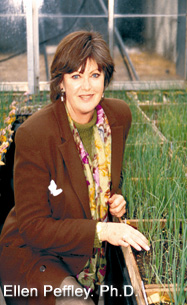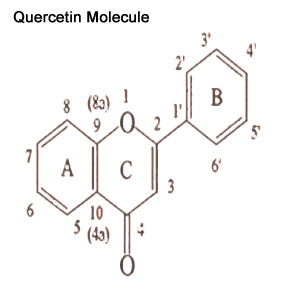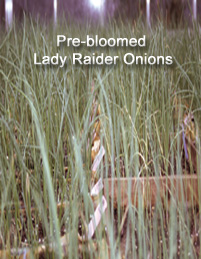|
 Just
imagine an onion that can rid you of the deadly disease, cancer. Sound
a little far fetched? "Not likely," said Ellen Peffley, Ph.D.,
Texas Tech University professor and researcher. By the year 2008 such
an onion will be on consumers’ shelves helping to prevent one of
man’s most fatal diseases. Just
imagine an onion that can rid you of the deadly disease, cancer. Sound
a little far fetched? "Not likely," said Ellen Peffley, Ph.D.,
Texas Tech University professor and researcher. By the year 2008 such
an onion will be on consumers’ shelves helping to prevent one of
man’s most fatal diseases.
Peffley began conducting her research on onions in 1988, since then she
has crossed many breeding lines and 10 years later she discovered a dusty,
rose-colored onion. This particular variety of onion is an early summer
onion.
"The onion is not sweet like most varieties of onions, instead it
has a very robust flavor and is very good for you," Peffley said.
Now that she had engineered the variety of onion, a name for it was the
next appropriate step. Since the onion has a very unusual rose color and
robust flavor, it surely has to be a winner. According to Peffley this
is the reason she named the onion after Tech’s own Lady Raiders in
the summer of 1998.
"I am a big fan of the Lady Raiders and I thought what a better compliment
than to name the onion after champions," Peffley said.
The reason why the onion is not ready for consumption is because it takes
a minimum of 20 years to breed a variety of onions.
Although the onion is still being researched and bred, Peffley said it
should be ready for a patent in 2006.
"It takes several years to patent a plant because it has to be a
protective variety," Peffley said.
To be a protective variety the plant has to be a novelty, distinct and
uniform. The plant has to be sexually propagated so it can be reproduced
and also be an open-pollinated variety.
The reason this onion can help inhibit cancer is it contains high levels
of Quercetin, which is the anti-oxidant flavonol. Quercetin is present in all types of onions, but the more color the onion has the higher
levels of Quercetin are present.
present in all types of onions, but the more color the onion has the higher
levels of Quercetin are present.
"The high levels of Quercetin is what makes the onion so good for
the consumer. It will inhibit generic forms of cancer. The levels of Quercetin
in the onion will not be lost if it is baked, boiled or sautéed,"
Peffley said.
Kevin Lombard, Tech graduate student, did extensive research on the health
benefits different types of onions provide to humans. He conducted studies
throughout Georgia, Michigan, Idaho and Texas, looking at onions from
these regions to determine the different methods of quantifying Quercetin.
He also researched how different ways of cooling affects the Quercetin
compound.
"Quercetin is an anti-oxidant which neutralizes free radicals that
inhibit cancer and forms of cardiovascular disease," Lombard said.
"Quercetin is very good for you, and it has great potential to help
prevent different types of cancer. Onions also contain sulfur compounds
that also provide health benefits while also helping to improve flavor,"
Lombard said.
Peffley, Lombard and Paul Mangun (Tech doctoral student) were invited
to the Alliums 2000 Conference to present their findings in onion research.
The conference was a week long from October 29-Nov. 3, 2000.
"The Alliums 2000 Conference is very prestigious for the university,
we were selected out of several other prestigious universities to present
our results among other scientists and researchers from around the nation,"
Lombard said.
 Dr.
Peffley presented results on her extensive studies of breeding molecular
levels of onions, and crossing different forms of onion genetics. Lombard
presented findings on the research he conducted on the health compound
Quercetin. Mangun presented genetics study on different types of onions. Dr.
Peffley presented results on her extensive studies of breeding molecular
levels of onions, and crossing different forms of onion genetics. Lombard
presented findings on the research he conducted on the health compound
Quercetin. Mangun presented genetics study on different types of onions.
Some of the funding for the Lady Raider Onion research is possible by
the Institute for Plant Stress. Texas A&M also distributes public
fundingto areas conducting research in struggling conditions.
"Tech and the College of Agricultural Sciences and Natural Resources
have supported the research very well," Peffley said.
Peffley’s research also receives federal funding to improve other
onions in the region, mainly the spring yellow onion.
"The Lady Raider Onion is an extension of the research of improving
onions in this region," Peffley said.
With the help of researchers like Dr. Peffley, Lombard and Mangun, improved
health benefits are inching closer to becoming a reality everyday.
|
|
|